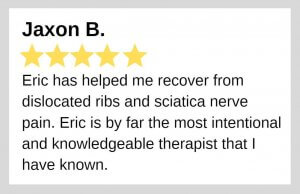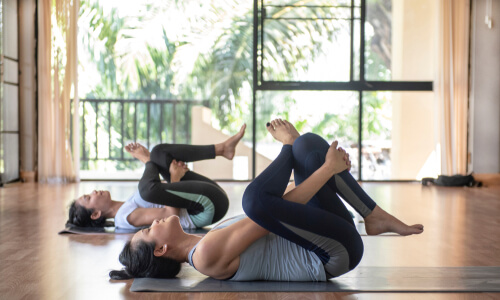
Physical Therapy for Sciatica

Sciatica is a condition in which the lumbar nerve root is inflamed or irritated. In today’s post, let’s take a look at how effective physical therapy for sciatica is.
A common symptom for this condition is pain traveling from the thigh all the way down the lower leg. Some patients have also reported experiencing pain from their lower back area. In some cases, this condition only affects one side of the body, which is referred to as asymmetrical pain pattern.
Sciatic Nerve
Starting at the spinal cord and traveling through the buttocks, the sciatic nerve then connects down the legs. As you can see, it’s the longest nerve in the human body. It has a lot of functions and can affect
Sciatica Symptoms
Sciatica pain scale can either be mild or severe. Often, the pain evolves from a herniated disk, which is a condition characterized when the spine narrows down – leading to a compressed sciatic nerve root as it leaves the spine. 
• Low Back Pain – also referred to as buttock pain, the pain goes down one leg from the back of the thigh. The pain can either be sharp, dull, pulling, or burning. Patients have also reported experiencing pain at specific times of the day, sometimes unrelated to whether or not they are engaging in an activity.• No Pain – no presence of pain does not mean that there’s no sciatica. It may also mean that the sciatic nerve is cripplingly compressed and completely dysfunctional.• Neurological Issues – tingling sensations and unstable reflexes.• Cramps, muscle weakness, or rigidity.
Sciatica symptoms may be exacerbated when bending over, lifting objects, sneezing, coughing, getting up or down, getting out of bed, etc.
Causes of Sciatica

Pregnancy, menopause, steroids, and psychosomatic issues such as depression, anxiety, and stress are possible causes of sciatica; these conditions can aggravate sciatica pain.

Many factors increase the likelihood of acquiring this condition. However, those with an active lifestyle are less likely to develop sciatica. Additionally, seeking physical therapy for sciatica or any other joint or soft-tissue related conditions can help manage the pain.
Spinal Stenosis
This occurs when the spinal canal narrows down, most commonly due to aging.
Herniated Disk
Also referred to as a slipped disk or ruptured disk, a herniated disk occurs when a gel-like substance inside the intervertebral disk’s juts out due to a tear in the outer ring of the disk. The substance strains the spinal nerve roots that are found around the disk. Slow degenerative conditions and acute back injuries can lead to this condition.
Inflammation
Inflammation of the anatomical structures around the sciatic nerve is also a common cause for sciatica. Some examples of inflammation that contribute to sciatica are muscle or bone injuries, misalignment of the vertebrae, tumors, digestion issues, and infections.
Pregnancy
During pregnancy, a woman’s body does all sorts of things to prepare it for carrying the baby and, ultimately, childbirth. One of these preparations includes producing relaxin, a hormone that relaxes the pelvic ligaments. This can lead to irritation around the sciatic nerves and buttocks regions, which can then lead to pain and discomfort.
Physical Therapy for Sciatica
To help get relief from sciatica pain, here are some physical therapy for sciatica exercises you can try to do. As always, to get the best and most effective results, consult with your doctor or physical therapist before you do any physically challenging exercises.
Reclining Pigeon Pose

Lay on your back. Bring the legs up to a right angle. Keep your hands behind your thigh. Bring up one of your legs while placing the ankle on the opposite on the knee. Hold the position for up to five seconds. Repeat on the other leg.
Sitting Pigeon Pose
Only do the sitting pigeon pose when you’re comfortable doing the reclining pigeon pose.
Stretch out your body on the floor with both legs in front. Bend the left leg while putting your ankle on top of your right knee. Push the upper part of your body towards your thigh as you lean forward. Hold the position for up to 30 seconds, stretching out your glutes. Repeat on the other leg.
Stop Sciatica with Physical Therapy
For more stretches and physical therapy for sciatica you can do, please don’t hesitate to reach out to us. We’ll be happy to help you along in your journey to recovery.
[do_widget id=recent-posts-2]
[do_widget id=categories-2]
© 2019, precision sports physical therapy. all rights reserved.
WE CAN DO ALL THINGS THROUGH CHRIST, WHO STRENGTHENS US.
